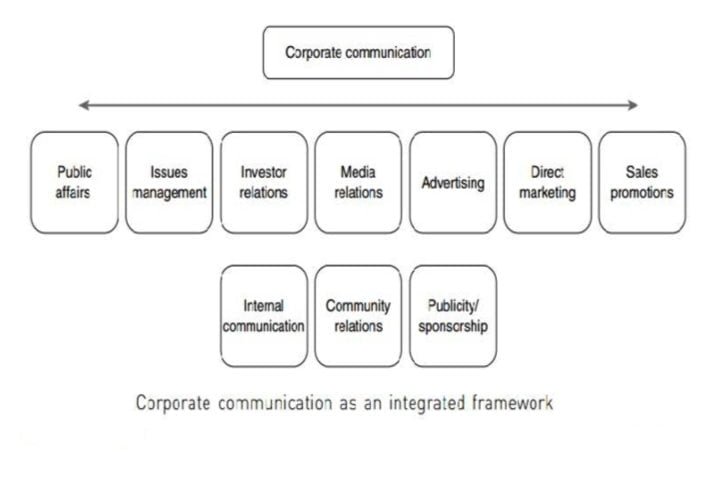Corporate Communication Practices
Corporate communication practices play a crucial role in shaping the image and reputation of a company. Effective organizational communication fosters transparency, builds employee trust, and ensures alignment with the company’s goals and values.
In This Article
Any organization’s future critically depends on how key stakeholders view it, such as shareholders and investors, clients and consumers, employees, and business community members.
Protecting the organization’s reputation is considered ‘critical’ and one of the most important strategic objectives.
Until the 1970s, practitioners used the term ‘public relations’ to describe stakeholder communication. However, it largely consisted of communication with the press.
As more demand for communication arose from different stakeholders, the roots of the new corporate communication function started to take hold. It focuses on the organization and how it presents itself to all its key internal and external stakeholders.
Marketing Public Relation
Organizations have realized that the most effective way of organizing communication consists of ‘integrating’ most, if not all, of an organization’s communication disciplines and related activities, such as media relations, issue management, advertising, and direct marketing.
Until the 1980s, marketing and public relations were considered two distinct disciplines regarding their objectives and tactics. Marketing deals with markets, while public relations deals with all the public (excluding customers and consumers) of an organization.
In the 1980s, concern over the rising costs and decreasing impact of mass media advertising encouraged many companies to examine ways to promote customer loyalty and brand awareness to increase sales. Companies started to make greater use of “marketing public relations.” It involves using public relations techniques for marketing purposes, which is a cost-effective tool for generating awareness and brand favorability.


Corporate Communication Framework
Corporate communication is a management function that offers a framework for effectively coordinating all internal and external communication to establish and maintain favorable reputations with stakeholders.
For multinational corporations with a wide geographical range, communication is often a balancing act between corporate headquarters and the various divisions and business units.
Key stakeholders’ perceptions of a company are crucial to its sustainability and success, and communication is essential to establishing, preserving, and safeguarding such reputations.
Corporate communication demands an integrated approach to managing communication. Organizations used to place corporate communication practitioners in higher positions in the organization’s hierarchical structure.
Case Study: Zomato India
Pankaj Chaddha and Deepinder Goyal launched “Foodiebay” in 2008 as an online restaurant directory for the people of Delhi. Later, it was branded as Zomato in 2008 as an online food directory primarily targeting Delhi, NCR. Within 9 months, the website gained popularity in cities like Mumbai, Kolkata, Chennai, and Bengaluru. In 2012, Zomato went international, presenting itself in many countries like the UAE, UK, Sri Lanka, Philippines, etc.
Zomato always strives for innovative communication strategies that can connect with public sentiment. Zomato is popular for its content, which people appreciate and share. This gives them more visibility among the target groups and reflects a strong brand position and brand image.
Zomato Communication Strategies in a Crisis










